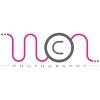-
Similar Content
-
Posts
-
Wow Jerry, Simply Wow and thanks: I switched off camera. Connected Cam to Mac with USB-C Switched on cam Looked at system report which said Camera PTP Then opened up Image Capture (I never even knew IC was still on the latest macOS) and the files on the GFX showed up. Then opened up LR and FINALLY GFX images showed. Interestingly like all the cameras - You don't get to navigate to the /DCIM folder - but that's no big deal. *** But for the exercise I tried this on my Intel MacBook Pro running Monterey - but no luck there with the above steps (No big deal). I hav Eno idea how this even started to work - Is it the process of Looking at Sys Report or Just the fact that I opened it on Image Capture OR that I Connected first THEN Switched on the camera. What actually made it work? The Irony is I don't think Fuji Support in Aust have any idea about this as they have been stumped over this for the last few months. Thanks Again - truly appreciated!! John
-
FYI Update - I just learned that the Zoom F6 & F3 recorder/mixers also synch to the UltraSynch Blue over bluetooth. I am planning to record 32bit float on the F6 and it will have frame accurate matching time-code with my two-XH2S' and one XH2.
-
Hopefully these will help some. For quite a while now Apple has put stuff into their operating system so that you cannot yourself open the connected camera’s card and see the images, you have to use their or third party software to do that.
-
Thanks for the instructions: I was doing up to 3 successfully but can't wait to get home and try 4 and 5 and report back. Cheers, John
-
Okay, just for completeness sake: 1. The camera’s menu connection setting is USB CARD READER. 2. The computer is turned on, booted and nicely operational. 3.. With the camera turned off, connect the camera to the computer using a known-to-be-good USB C data plus power cable (a data only cable should work as well, a power only cable will not work). 3. The camera’s charging light may turn on. Turn the camera on. The back screen probably will show the USB symbol as well as the USB letters. 4. Start up the Image Capture app and see if the camera’s name appears in the devices list. 5. In the Apple menu, select ‘About This Mac’, click on the ‘More Info…’ button, and on the right hand side of the window that opens, at its bottom is a button called ‘System Report…’, click on it. A new window should open, the left hand side has collapsible dropdown listings, the first is called “Hardware’, within it is the USB listing, select that. The right side pane should give you listings of all the USB devices connected at that moment, one of them should say something like USB PTP Camera. Does either 4. or 5. work?
-


Recommended Posts
Join the conversation
You can post now and register later. If you have an account, sign in now to post with your account.
Note: Your post will require moderator approval before it will be visible.